| Zeitschrift Umělec 2004/2 >> Pictures at an Exhibition | Übersicht aller Ausgaben | ||||||||||||
|
|||||||||||||
Pictures at an ExhibitionZeitschrift Umělec 2004/201.02.2004 Simona Vladíková | en cs |
|||||||||||||
|
Plug-in
Futura Gallery, Prague, 7. 5.–27. 6. 2004 Plug in means to be connected, attached, linked up. It is true that most of the art in the Plug In exhibition, couldn’t tell us much without electricity (it is mostly video), but there are things that might be perceived without electric current, so I’d like to consider further the justification for this title. The texts in the catalogue help. The curator, Mario Rizzi, was concerned with the reflection of compatibility, integration and standardization of communication, and subsequent suppression of any variety. As we can anticipate and further read, these processes are related to the establishment and enlargement of the European super-state into which some of us from the East have been accepted... Simply put, the theme of the exhibition is: who is where and why, who is with whom and who is against whom, and how does everyone feel about that... There are several questions engaged by the show: cultural and national identity in a globalized era and the ability of art to reflect both of these properly, the question whether art can become a means of social change, and associated ethical questions. In concept it also raises the problem of the role of the curator which, in this case, is presented as possibly purely creative and artistic. But life is not always so friendly, and what the curator proposes the spectator can dispose of. Any passer by who happens in from the outside is unlikely to probe outright any conceptual impulses; he enters without hesitation... ...and if he isn’t apathetic he can, right from the start, elevate his own self-confidence and go through the Arc de Triomphe For Personal Use (2004), by the living legend, Jimmie Durham. Before he can imagine how great it is to be there, he is interrupted by an annoying irregular banging sound from around a corner. So, slightly irritated, he lumbers on. As if on his pilgrimage distressing movement through the space and its problems were counted on, he comes to a stick leaning against the wall. No pilgrim’s cane in the true sense of the word, it’s just Jimmie reminding us of his global perspective by setting this stick against the wall — an almost Zen message in neo-Dadaist dress about the center of the world in Prague: Pole to Mark the Center of the World at Prague (2004),1 and about the significance of our Central European meridian. So, let the center of the world be defined, now! Gaze into the mirror, now! Pay a compliment to the master, now! Any chance to confront one’s own smallness and pettiness, thanks to that tough guy from the great big world, is always handy, isn’t it? Thank you very much, Mr. Durham, we have been short of this lately! Around the corner someone persists with that banging. While musing on these feelings of superiority and subordination and about who should preach to whom and why, I become bothered enough by the banging to go see who is doing it, and why. It turns out to be Khalil Rabah; he’s smashing olives with a rock. The video entitled I Want To Be With You (2003), announces the obviously obstreperous Khalil to the rest of the world. OK, I can forgive him for this nuisance and his disgustingly long nails on the hand holding the stone. I have just enough time to sigh with relief as the stone misses an ant going by – at least there’ll be no massacre. But the whole thing seems a bit vulgar and slightly dull, and even the artist’s unclear obsession with olives (the olive tree as the symbol of life in Palestine) is uninteresting, so I move on. But at the moment, I have no idea that a much more unpleasant intrusion awaits. This time it’s a visual one: a silent box of terror with a disgusting retro-reality TV show about nuclear experiments with pigs (ERR: Element One, 1999), by Susan Norrie. It really outraged me. With silence, her attack is much more effective than all of Khalil’s banging, and so I have a simple message for Susan: I don’t want to be visually bothered for any reason (and even by experiments on people – I really don’t know who has the guts for this, except for the author). If someone presents me with such things, I don’t want to know why he is doing it, or what he means, or how premeditatedly such sleaze has been installed, how the projection is color-tinged, what I sit on while watching it, and God knows what else... I’d much rather switch to a different channel. My discomposure is luckily settled by the next 3-minute Attempts To Survive (2000), by Anna Jermolaewa – the first good video. A group of those swinging dolls, that keep flipping back to a vertical position, moves slowly on, until in the end one trashes the other, helter skelter, and then slowly but surely they hammer each other into nothingness. At an appropriate duration, this one is fresh, funny, concise, and free. The suicide, however, seems a tad collective, but that’s just a detail. I don’t need any ideo-commentary for such a video, and it is readable enough for me. And if it isn’t the way I described it, it still loses none of its charm. It is those allusive things, that have grace and maintain an amused distance, that tend to be the best art, anyway. Actually, I find everything anchored outside tangible reality attractive. At least those appearing with surprise and that start as quickly as they end – like those five thirty second micro-stories on midi-screens continuously running in the space, changing into signal colors that Eija-Liisa Ahtila plugged in for us. The Present (2001) depicts crawling on one’s knees, lying down in a puddle, demolishing wardrobes and several other strange activities all presented by women. And I wouldn’t need to know that it is a reflection of psychotic states of mind. It’s enough to know how it works in the space, changes itself, mingles, shifts, surprises or is poignant, fragile, exact, alive... yes, Eija-Liisa, great! Another bright one boldly beaming into the world of great art is Mircea Cantor from far flung Transylvania. Previously a teenage tramp by trade,2 Cantor is now Mr. Performance and Video. Don’t be put off by the projection’s slightly trivial title, The Landscape is Changing (2003). Mirrors are held up by people in a space, the noise of a city whose rainbow reflections, lights, movement and colorful architecture are sometimes a la Giotto and washed with tones resembling Nikita Michalkov’s Utomljonnyje Solncem (Burnt By The Sun). At first, I thought it was Italy, but it turned out to be Tirana. So there: a proper global mixture. Although sometimes too documentary, inconspicuous and lengthy, those who persist and don’t run away before the end (I was about to get up), will be treated with sensitively filmed passages, a play with calm detailed segments, featuring mirrored surfaces with changeable pictures – reflections. And as soon as you have gone through it all, up comes some kaleidoscopic effects accompanied by Musorgsky; It’s a 3D model and you get a perfect ride! Moreover, while listening to the tones of Pictures at an exhibition, I realized that they really are among the best reflections of any visual presentation that I know of. I don’t know which exhibition Musorgsky visualized while writing the Pictures, but we can assume that it was pretty different from this one. I deeply regret that as a result of my minimal musical literacy, there won’t be any symphonic interpretation of Plug In any time soon. With more positive emotion, I continue towards new adventures and enter the innards of the Futura Gallery. On the way, I look in vain for the author of some cute digital photos or LightJet prints, hung here on the walls as if as happenstance – their author seems increasingly congenial to me in his anonymity. I descend into an authentic garage space — dark, fetid and cold. The noise, humidity and broad spectrum of specific smells and maxi-projections very effectively emulates the ennui of similar spaces. Pavel Braila’s Shoes for Europe (2002) are supposed to speak about the differences between East and West, and they were created with the sweat of mundane sojourns through the world capturing these differences, and the new mythos of transnational identity in subjectively fragmented time. Overcome with a cold unwelcome feeling, I left the cellar spaces. It isn’t just light and warmness that lures me from that gloomy tomb. A mysterious, wonderful singing, clearly of Eastern provenience whose source is a documentary video called ASHURA: This Blood Spilled in my Veins (2002), being Jalal Toufic’s recordings of ritual Moslem blood letting. There are strong, masculine emotions, in a raw and very experienced manner. A Chorus of sweaty and breathless men sing and beat their breasts. Some are on the verge of tears with facial expressions at the climax of the ritual influenced by an experience not unlike having good sex. Everything is real, not acted, and I am wondering whether the recording had not been made in secret, unbeknownst to the participants, and as such is unethical. And in addition to that there are two black tapestries containing some liturgical text, something like an oath. The calligraphic mandala of a left hand beckons to be touched. I have to contain myself, because I really don’t want to make a vow to Islam (I couldn’t even read what they have written there), but I have to admit there is something about that cloth. Although one is oriented against all misuse of the interest in Islam, either in art or elsewhere, one cannot deny its power to communicate. I realized that Moslems can really work with mass psychology and the collective emotional experience of men. They really have it down: a strong, masculine (really blood-related) bond to the exclusion of all that is feminine. Women are reduced to serve as a tool for men, useful only for childbearing, multiplication and the resulting responsibility to care for children – basically women function as dishwashers, refrigerators and such. Unfortunately, some women are calling on this Moslem categorization with a slightly hysterical defense of a women’ s world. And even though I have the impression that all female artists ceased menstruating and suckling in the middle of the nineties, there appeared one who speaks for this type of art in body and soul with a simple installation on maternal milk: Lisa Glauer’s Fresh, Natural Mbabumama (2004). The whole work can’t prevent the fact that mother’s milk is offered to people in home-made packages. Well, I am relieved to have finished my own breastfeeding and I don’t want to talk about it anymore. Even as a woman, I have very little interest in that. And what about the others, such as men who are bothered by feminine problems! The video, Episode 1 (2003), is accompanied by a sign saying that it starts every hour on the hour, so I disqualify it at once. Sorry, Renzo Martens, I don’t have the stomach to spend an hour watching a video at an exhibition. I just catch a glimpse of a raw monologue of a young woman talking about the war in their region and says she has nothing to eat, and I think about the absurdity of watching it that moment. Just like me, the person who shot this hasn’t got a clue about what it’s like to live in such a world, and the money that went into this video could feed that girl for a month or more. I have to concur with one of the video’s protagonists. Asked for an opinion of the author, he says, “well, you are an idiot with an itch for adventure...” For many works, the artists’ motivations are unclear and if I don’t feel any real inner cause or artistic motivation, I consider it useless to pay attention to them. Money and effort went down the drain just to fill some shows and magazines with art, and the whole thing makes no sense. All those stated, theoretically skillfully and ornately reasoned themes of contemporary art seem to exist only to fill up creative emptiness and desolation that frustrated participants of the art market have to deal with, and then adorn it all properly with skillful words. I see more outwardly poetic declarations than reasoned activity, and that’s what’s getting to me. Well, the last and most beautiful room of Futura has prints, photos and one mini-projection. The mini-presentation of a possibly future super-multi-parallel projection entitled Baron’s Hill, WORK IN PROGRESS (2004), by Pavel Braila, was also unconvincing, and in this case the massive-size won’t save that nothingness from under the gloss. It is simply boring be it big or little. The music to Pavel’s video creates a nice atmosphere to the subtle and expressive LightJet prints by Phil Collins whose fantastic photos are like those of the anonymous ones from the corridor. That babe with a tattoo on the shoulder opposite the project room was interesting and now these other expressive portraits are very good. Phil is obviously an attentive boy with a sensitive eye and camera; that’s clear from the start. My only objection to this particular otherwise professional installation – I would give Phil the whole room. Yes, I admit that I prefer intelligent beauty over dull ugliness. I like lightness, clarity, wit and flair, elegance and concise expression. Roughness, cruelty, stupidity and cheapness bore me along with the superficially tendentious ambitions and speculations of “authentic” art. And at Futura there is a bit of everything. Jimmie has clever comments, Susan and Lisa are disturbing in their own way, Khalil is frustrating, Anna is funny and pleasing, Eila-Liisa surprising, Phil emotes expressively, Pavel tires, Mircea mirrors, Renzo speculates, and Jalal spills blood with feeling. Notes: 1. This object is an authorial remake of an older, geographically unspecified version Pole to Mark the Center of the World, 1996 2. Mircea Cantor headed on a pilgrimage in his teens just after the opening of the borders of Romania and hitchhiked through Europe.
01.02.2004
Empfohlene Artikel
|
|||||||||||||
|
04.02.2020 10:17
Letošní 50. ročník Art Basel přilákal celkem 93 000 návštěvníků a sběratelů z 80 zemí světa. 290 prémiových galerií představilo umělecká díla od počátku 20. století až po současnost. Hlavní sektor přehlídky, tradičně v prvním patře výstavního prostoru, představil 232 předních galerií z celého světa nabízející umění nejvyšší kvality. Veletrh ukázal vzestupný trend prodeje prostřednictvím galerií jak soukromým sbírkám, tak i institucím. Kromě hlavního veletrhu stály za návštěvu i ty přidružené: Volta, Liste a Photo Basel, k tomu doprovodné programy a výstavy v místních institucích, které kvalitou daleko přesahují hranice města tj. Kunsthalle Basel, Kunstmuseum, Tinguely muzeum nebo Fondation Beyeler.
|







.jpg.detailThumb.png)
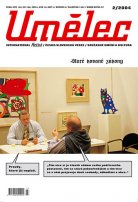
.jpg.thumb.png)
.jpg.thumb.png)
















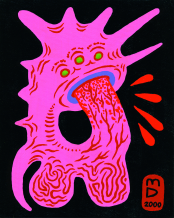
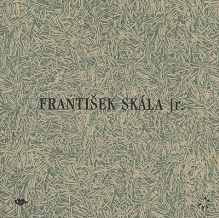
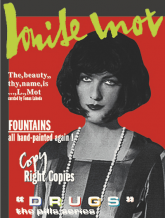
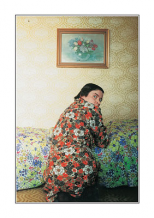


 We Are Rising National Gallery For You! Go to Kyjov by Krásná Lípa no.37.
We Are Rising National Gallery For You! Go to Kyjov by Krásná Lípa no.37.
Kommentar
Der Artikel ist bisher nicht kommentiert wordenNeuen Kommentar einfügen